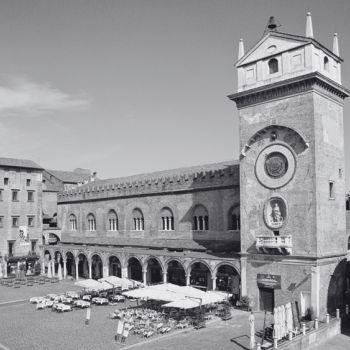The Collection
Sonnaband Collection
A new museum of contemporary art is born around one of the most significant private art collections of the 20th century — the Sonnabend Collection, permanently housed in Mantua’s restored Palazzo della Ragione.
Developed through the vision of art dealer and collector Ileana Sonnabend (1914–2007), her husband Michael Sonnabend (1900–2001), and their adopted son Antonio Homem, the collection stands as a crucial testimony to the artistic movements that defined the latter half of the twentieth century.
Through their galleries in Paris and New York, the Sonnabends played a pivotal role in bringing American art to Europe and European artists to America.
The project is promoted by the City of Mantua in partnership with the Sonnabend Collection Foundation and Marsilio Arte, which will oversee the museum’s overall management — from organization and communication to publishing projects and bookstore coordination.
Opening on Saturday, November 29, at the renovated Palazzo della Ragione, the Sonnabend Collection Mantova presents the extraordinary collection assembled by gallerist Ileana Sonnabend, who reshaped the international art scene by bridging America and Europe.
The exhibition features some of the most important private holdings of the past century. Developed through Sonnabend’s visionary eye and her commitment to artists across generations, the collection includes emblematic works of Pop Art, Minimalism, Arte Povera, photography, and performance.
Iconic American masterpieces — Figure 8 by Jasper Johns, Little Aloha by Roy Lichtenstein, Campbell’s Soup by Andy Warhol, and Kite by Robert Rauschenberg (winner of the 1964 Venice Biennale Golden Lion) — are shown alongside works by Jim Dine, James Rosenquist, Tom Wesselmann, and Italian contemporaries like Michelangelo Pistoletto and Mario Schifano.
The journey continues with essential works from the 1960s and 1970s, from Minimalism (Donald Judd, Robert Morris) to Arte Povera, which Sonnabend was among the first to exhibit in New York, featuring Giovanni Anselmo, Jannis Kounellis, Mario Merz, Giulio Paolini and Gilberto Zorio.
Her interest in photography and performance is reflected in collaborations with Bernd & Hilla Becher, Luigi Ontani, Vito Acconci, Gilbert & George, Candida Höfer, and Matthias Schaller.
The collection concludes with major figures of the 1980s, including Jörg Immendorff, Anselm Kiefer, A.R. Penck, Jeff Koons and Haim Steinbach.
Artistic Director Mario Codognato notes:
“Michael and Ileana Sonnabend always had a deep bond with Italy, a country they knew and loved with a unique and surprising perspective. It is therefore deeply meaningful that their remarkable collection finds its home here, in Mantua. Michael’s profound knowledge of Dante makes Palazzo della Ragione — a 13th-century building — an almost fated setting. Ileana, meanwhile, was instrumental in introducing postwar Italian artists to the United States, and this homage represents a natural continuation of her story.”
Exhibition design by unostudio
Main sponsor: BPER Banca
Ileana Schapira was born in Bucharest, Romania, on October 28, 1914, the daughter of an industrialist. At nineteen she met Leo Castelli, whom she married the following year. After fleeing Europe during World War II due to Nazi persecution, the couple settled in New York, where Castelli opened a gallery in their home in 1957.
After their divorce in 1959, Ileana pursued her own path in the art world. In 1960 she married Michael Sonnabend, a Dante scholar, and two years later opened the Galerie Ileana Sonnabend in Paris, showcasing American artists and emerging Italians such as Mario Schifano (1963) and Michelangelo Pistoletto (1964), followed by Gilberto Zorio, Mario Merz, Giovanni Anselmo (1969), and Jannis Kounellis (1972).
In 1970 she opened a gallery in New York, relocating it the following year to SoHo, alongside the Castelli Gallery — sparking the migration of the contemporary art scene to that district. The SoHo gallery opened with Gilbert & George’s now-famous performance Underneath the Arches.
Live performance became a cornerstone of Sonnabend Gallery’s program in the 1970s — from Jannis Kounellis’s Da inventare sul posto (1972) to Vito Acconci’s Seedbed (1972), where the artist performed unseen beneath the gallery floor, vocalizing his fantasies to visitors above.
Ileana Sonnabend’s insight, passion, and curatorial rigor echo the spirit of another great Mantuan patron: Isabella d’Este, Marchioness of Mantua, one of the Renaissance’s most celebrated champions of the arts.
The Museum

The Palazzo della Ragione is part of Mantua’s medieval civic complex. First mentioned in documents as the Palatium Novum, it was built between the 11th and 12th centuries to serve public and administrative functions, hosting assemblies and markets.
It underwent several modifications over the centuries — the Clock Tower was added in 1472, featuring a remarkable astronomical clock by mathematician and astrologer Bartolomeo Manfredi. In the 18th century, the façade was redesigned by Doricilio Moscatelli, and in the early 20th century, architect Aldo Andreani restored its medieval structure.
Since 1997, the Palazzo has served as a major exhibition venue for the Civic Museums of Mantua, hosting numerous art shows.
Today, it begins a new cultural chapter with the Sonnabend Collection, whose installation by Federico Fedel revitalizes the historic halls, blending medieval heritage with a contemporary museographic vision.
The Clock Tower, commissioned by Marquis Ludovico II Gonzaga and designed by Luca Fancelli (1472–73), houses the historic Manfredi Clock, which indicates not only the hours but also the zodiac signs, lunar days, and planetary influences.
Inside the tower, the Museum of Time displays original mechanisms and components from different eras — including the 15th-century crown and hands, copper zodiac symbols, and the Foucault pendulum.
Visitors can admire these artifacts and enjoy a breathtaking panoramic view of Mantua from the top floor.







